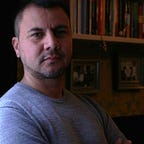Visit Cristo Redentor with Kayak
After several weeks we arrived at challenge number three. This time I have chosen to work on the KAYAK application. It is very funny to mention that the word KAYAK is a palindrome. Did you know what a palindrome is?
“A palindrome is a word, number, phrase, or other sequence of characters which reads the same backward as forward, such as madam, racecar.”
…and so palindrome is, that users in this application also go backwards and forwards. At least that was my impression when I did a flow analysis. I asked them to execute two specific tasks that I will explain later.
The group of people I chose to “make this trip” was a group of friends from Berlin under forty years old (young group), with stable jobs and who had saved all year to travel together. The dream of this group was to get to know one of the seven wonders of the world (according to surveys in 2017). They wanted to go to “Rio d´ Janeiro” to enjoy the sun and the wonderful beaches, but they had also agreed to visit the monument “Cristo Redentor” on the top of the mountain. It was a dream they had and they wanted to do it with a guided tour in just one day. In order to enjoy a week’s vacation, they had to have everything planned, including the attraction.
To carry out the study I chose five people who were frequent travellers, had stable jobs and also coincided with the group of four young people who wanted to travel to one of these wonders of the world.
The interview with each person lasted about fifteen minutes because we had to use the applications and record the screen. I also used a web page (appusabilityhub) to prepare a five seconds test in order to understand the “look and feel” that the interviewees perceived.
In the test, I realized that the five people could quickly identify what the application was for. Five people agreed that it was to search for flights. Two people answered that it could be used to search for locations. Only two people mentioned car rentals and hotels. I came to the conclusion that the “look and feel” of the page was on the right track.
The first problem I encountered was when I gave the first task to the interviewees:
TASK A: look for a week’s round trip flight to Rio de Janeiro for four people on any date in 2021.
Forty percent could not find a flight quickly and intuitively. It took more than three minutes for one person to finally get the origin-destination search option. And the last person also took some time since he used as first option the search icon of the secondary buttons on the footer.
With this, I came to the conclusion that the first pain point according to 10 Usability Heuristics for User Interface Design from Jakob Nielsen was that the flight search was not as clear as I thought. So I realize, the user identifies a flight search better when he sees the origin and destination buttons.
The solution for pain point A was to show the user the destination and origin search bar so that he would understand that here is where he could enter the city where his flight was departing from.
The second and most serious pain point was with Task B.
TASK B: find in the application some way to visit the attraction “Cristo Redentor” in Rio de Janeiro.
The option of attractions does not exist in KAYAK, you can only look for hotel packages, flights, and car rentals. This had to change!
In the secondary buttons of the footer I add a new button for attractions. I put the button in the second position as the first one led you back to the main search and I felt that it should keep its importance in the number one position.
Create an option of attractions that when clicked takes you to a world map and there you can choose the city you want. You are offered different attractions, plus a price list with image and description. To save steps just, right there below the description a “book now” button. When you select the attraction of your preference and click on “book now”, the application takes you to another frame with an image, description and the price you have already paid. This would be the final step where you have confirmed that the option is reserved.
What I have learned in this process is the importance of user testing and the wonder of options that are born after analyzing the user's pain points. It is as if through doing these tests thousands of solutions appeared that were not seen at first. That’s the final conclusion. No solutions appear if you don’t first understand the errors and for that, you have to test the prototypes.
The designer is nobody without the user.
